Missouri high school teaches kids how to cull, butcher and cook animal carcasses to combat rising grocery bills
Students at a Missouri high school start their school day with the morning hunt and then move on to butchering and cooking carcasses.
At Maysville High School in Maysville, MO, a farm-to-table class has been offered since 2022 by family and consumer sciences teacher Amy Kanak and agriculture teacher Brandi Ellis.
Students learn to hunt, dissect and identify animal organs, process the harvested meat and prepare it for cooking as part of programs offered by the Missouri Future Farmers of America (FFA) chapter.
“It forces them out of their comfort zone a little bit,” Ellis told the New York Times. adding that the classes are importantAs Americans battle rising grocery bills.
The average American household spends $1,080 per month at the grocery store, and in the golden state of California, the average household spends $297.72 per week.
Students at a Missouri high school start their school day with the morning hunt, then move on to butchering and cooking carcasses
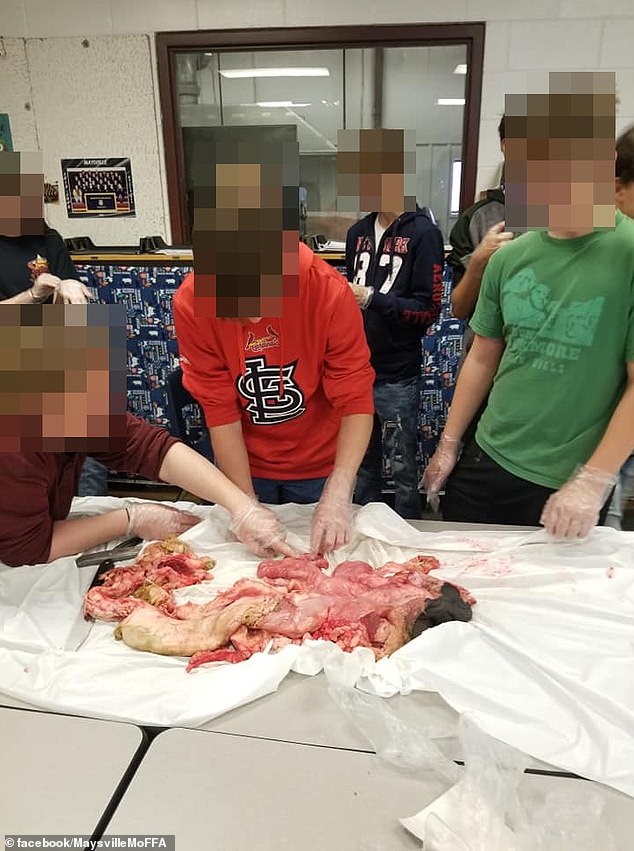
At Maysville High School in Maysville, a farm-to-table class has been offered since 2022 by family and consumer sciences teacher Amy Kanak and agriculture teacher Brandi Ellis.
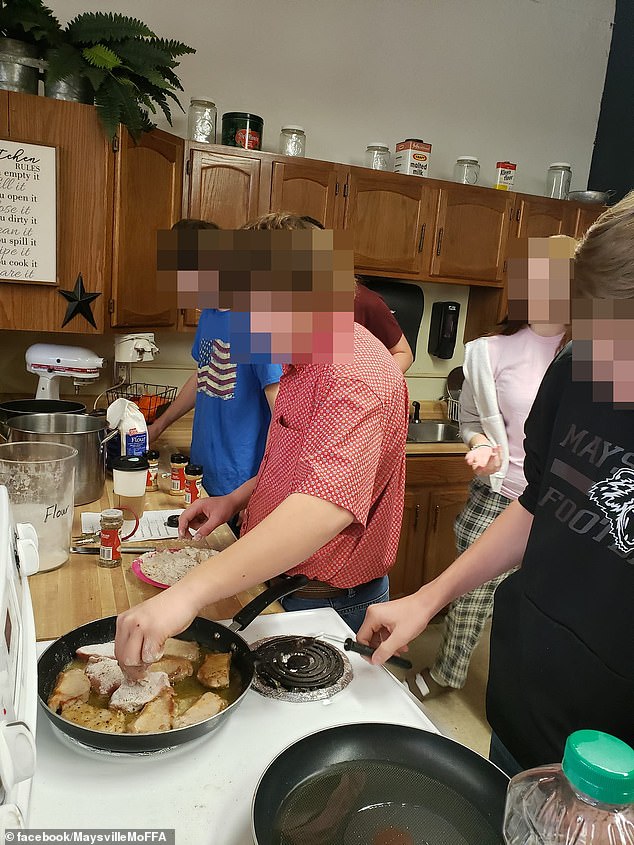
Students learn to hunt, dissect and identify animal organs, process the harvested meat and prepare it for cooking as part of programs offered by the Missouri Future Farmers of America (FFA) chapter.
As two years of rampant inflation take their toll on grocery budgets, the cost of food at home has risen 2.6 percent over the past 12 months, according to HelpAdvisor’s analysis of data from the US Census Household Pulse Survey.
If students know how to hunt and process a deer, which yields 55 to 70 pounds of processed meat, or how to prepare a chicken, which on average contains 70 percent of the meat and skin of its original weight, they may have a much cheaper option.
Students at Maysville High School in Maysville, an hour’s drive north of Kansas City, were already raising cattle, learning to hunt and helping their parents on their farms before enrolling in agriculture classes.
Garrett Bray, a senior in 2022, learned to hunt from his father and has been hunting since a young age.
Brendan Barton, a junior at the time, owned 17 breeding sheep, 10 market lambs, two cows, two heifers, two butcher calves and three breeding pigs, as the school shared on Facebook.
In the new farm-to-table class, many students picked up a knife and made a cut for the first time as an important part of the process of understanding where their food comes from.
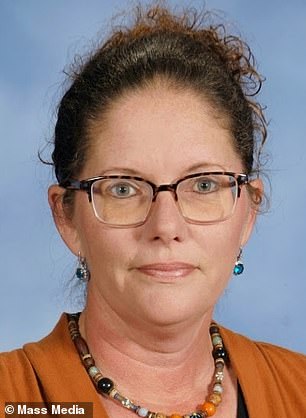
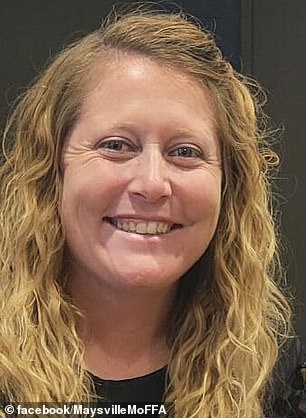
Family and consumer sciences teacher Amy Kanak (left) and agriculture teacher Brandi Ellis (right) have been teaching the course since 2022
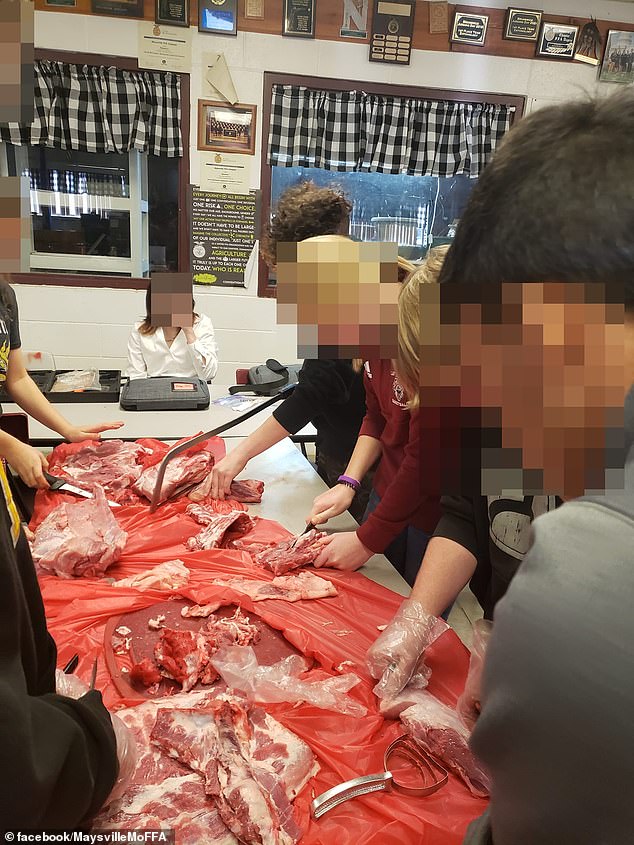
In the new farm-to-table class, many students picked up a knife and made a cut for the first time as an important part of the process of understanding where their food comes from
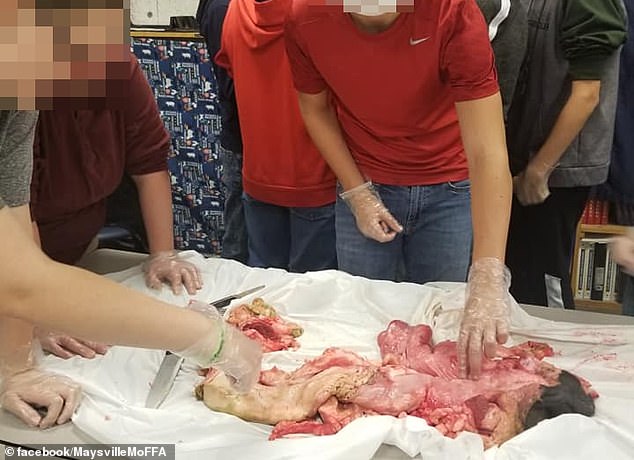
In a lesson on animal reproduction, students were tasked with identifying each section of a real female reproductive tract!
In various lesson units, students were assigned to identify animal organs, process raw meat and bring it to the table.
Sometimes they learned safe hunting tips and started hunting early in the morning before fattening the field and quartering the harvest.
They also identified and felt various parts of the reproductive tract, heart, lungs and other organs they harvested from animals.
One specific class was dedicated to pork, where students broke down one side of the pork into retail pieces, labeled and prepared for cooking.
In photos shared on the school’s social media account, Sophia Redman, a 2022 freshman, is seen holding a knife and making the first cut on a deer.
Local residents and businesses are also participating in the program, with wholesalers donating their meat and farmers distributing their livestock.
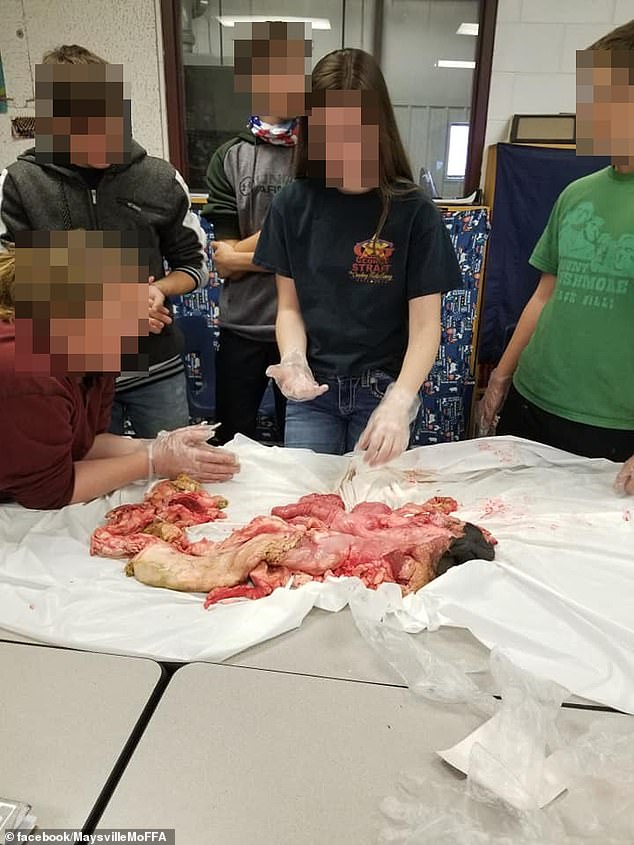
In various lesson units, students were assigned to identify animal organs, process raw meat and bring it to the table
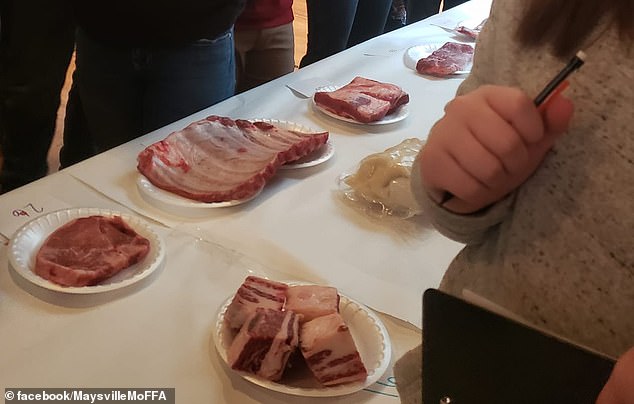
One specific class was dedicated to pork, where students broke down one side of pork into retail pieces, labeled them and prepared them for cooking
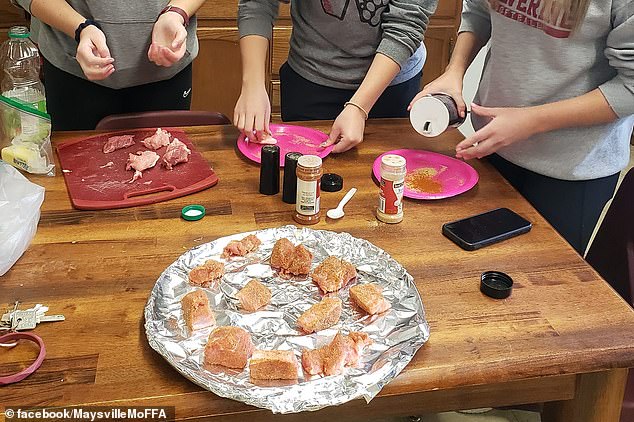
Later, students learned how to cull, defeather and remove chicken organs and feet before marinating and placing them in the oven.
Last December, a neighbor called Ellis and asked to donate their seven “overly aggressive” roosters to the program.
Later, students learned how to cull, defeather and remove chicken organs and feet before marinating and placing them in the oven.
The school shared photos of children enjoying their meals, which included grilled chicken breast and deep-friend drumsticks.
Hyatt Processing, a local processing facility and meat wholesaler, donated pork for the school’s agricultural science classes.
Photos show a dozen children breaking down the pork rack and cutting the meat before heading to the kitchen table and marinating it for the pork tenderloin.
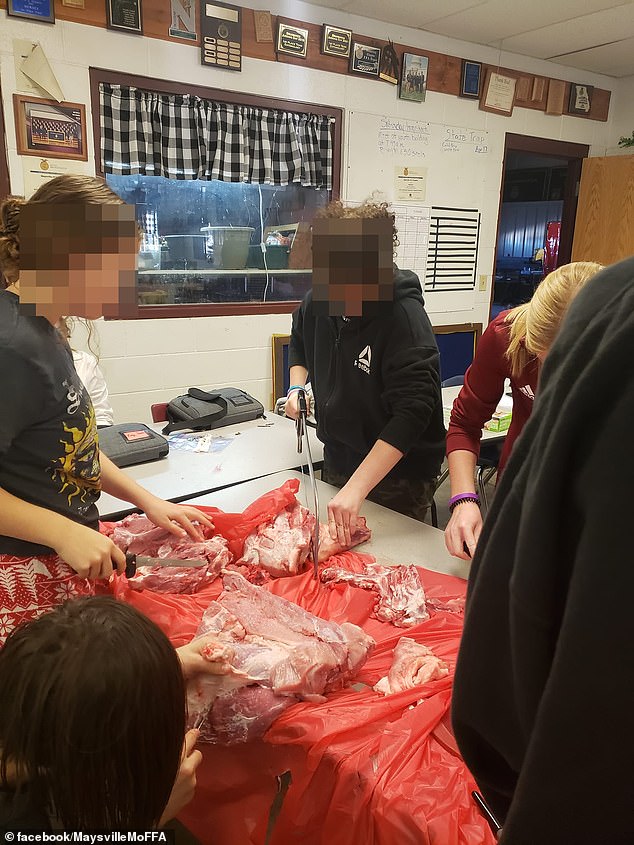
Photos show a dozen children breaking down the pork rack and cutting the meat before heading to the kitchen table and marinating it for the pork tenderloin
Many students enrolled in Maysville High School’s agriculture class went on to work part-time at local butcher shops, meat wholesalers and farms.
Kloie Wade, a 2021 sophomore, joined Hyatt Processing because of her supervised farming experience, a required component of the FFAs program.
Inside the facility house where several giant beef carcasses were hung, the young girl can be seen tenderizing the meat and packaging ground beef wearing an apron.
‘She has already learned how to wrap a burger, tenderize it, package it, clean the area and cut meat! Her boss is impressed that she is willing to work and learn new skills,” the school said in a message.
